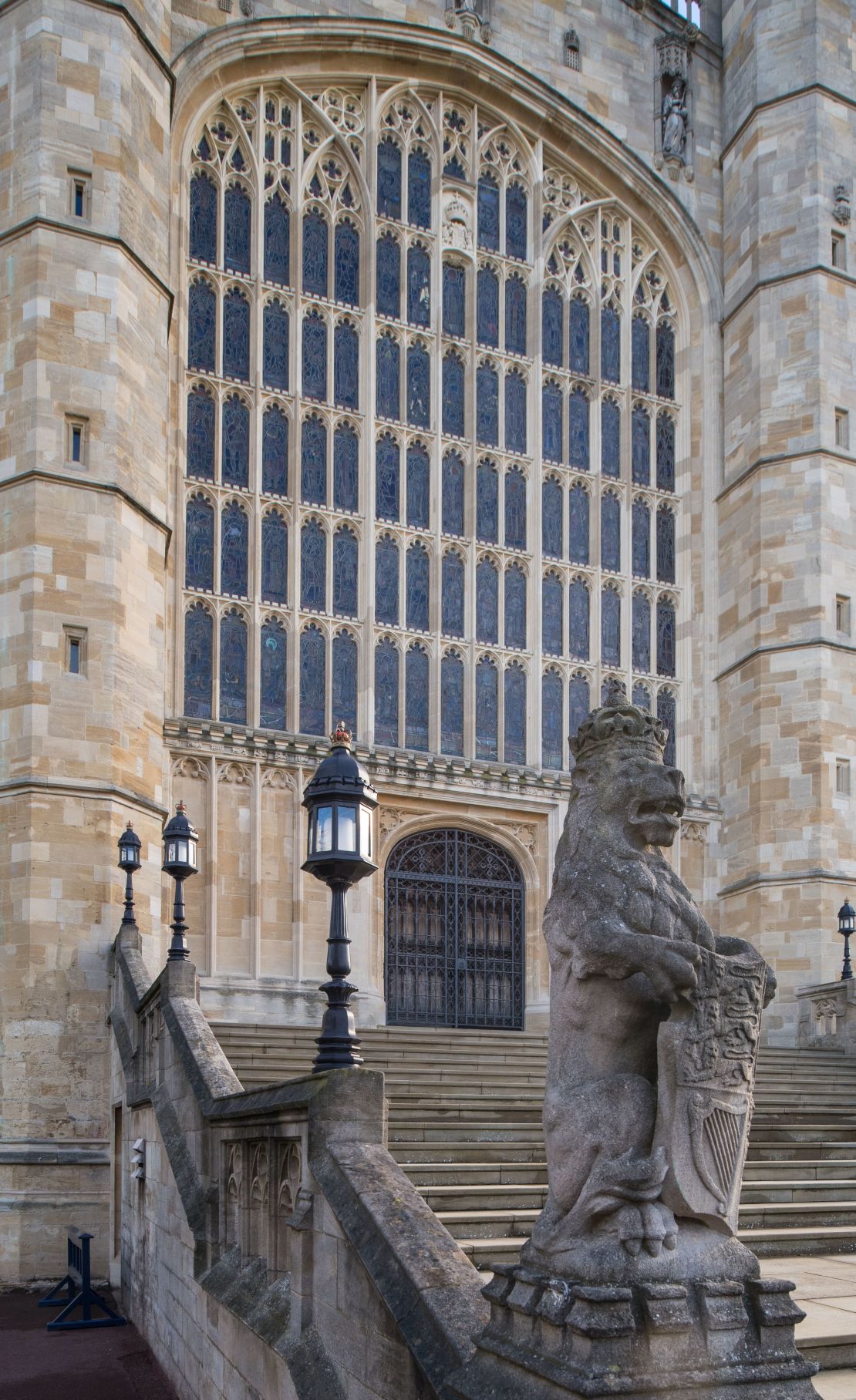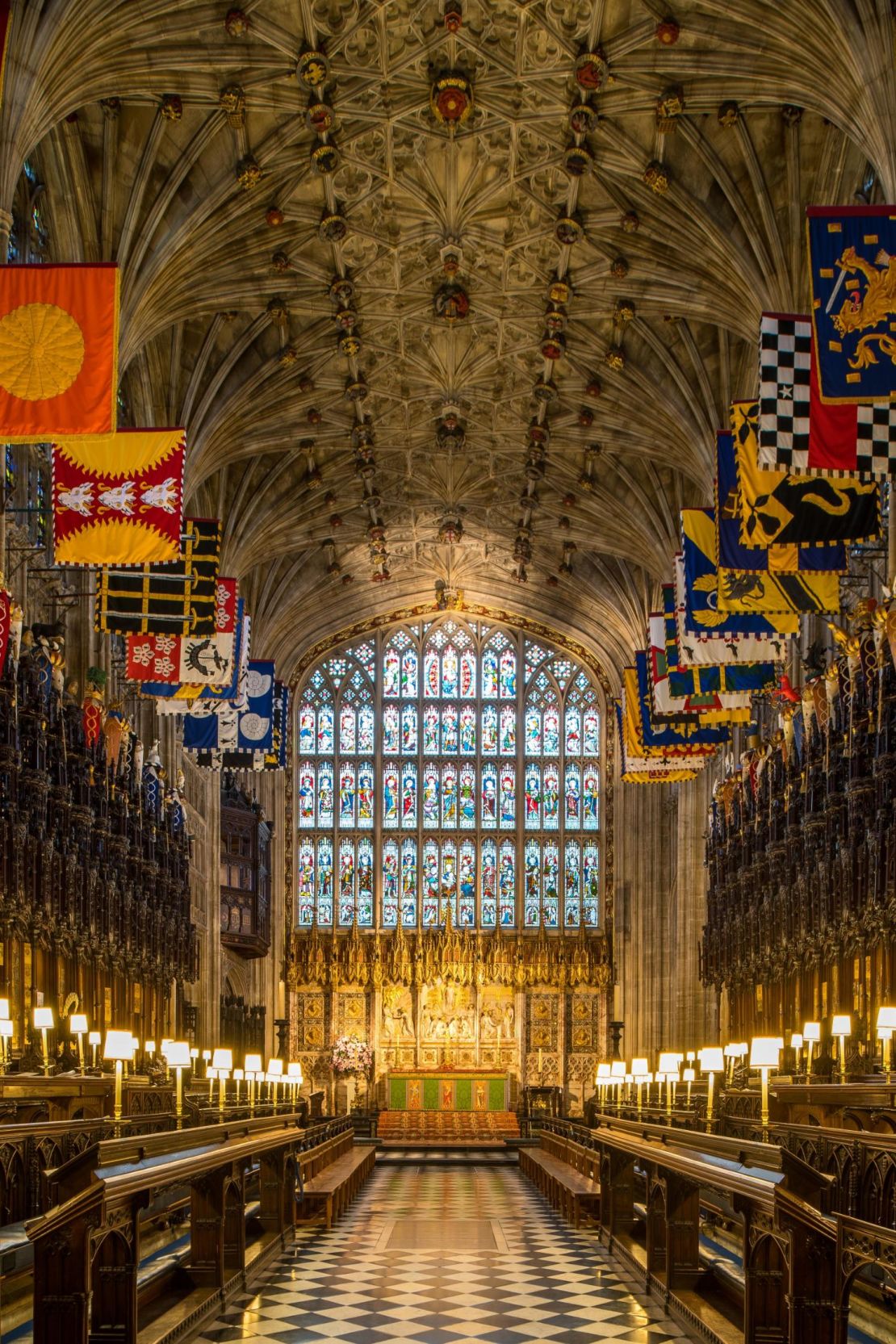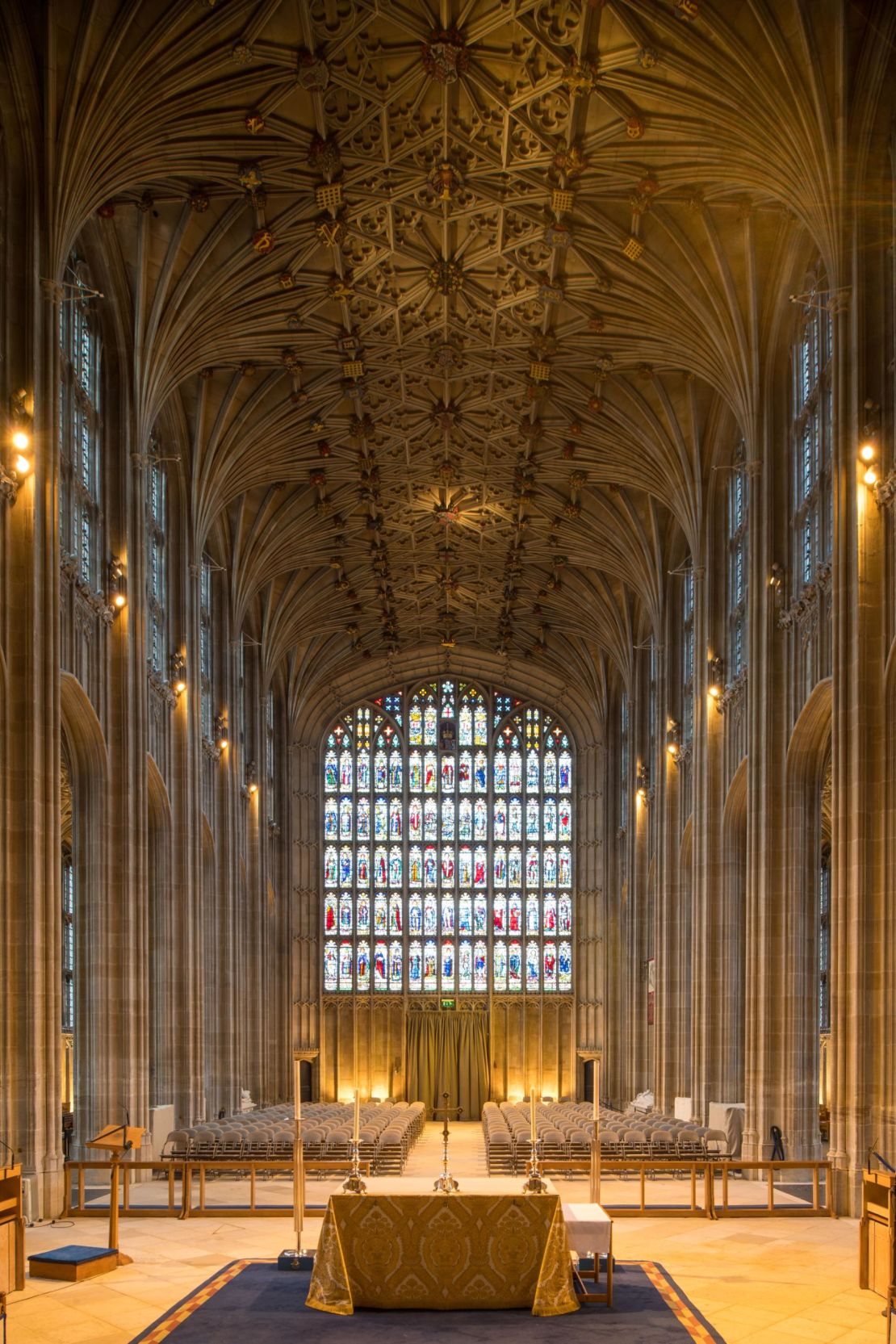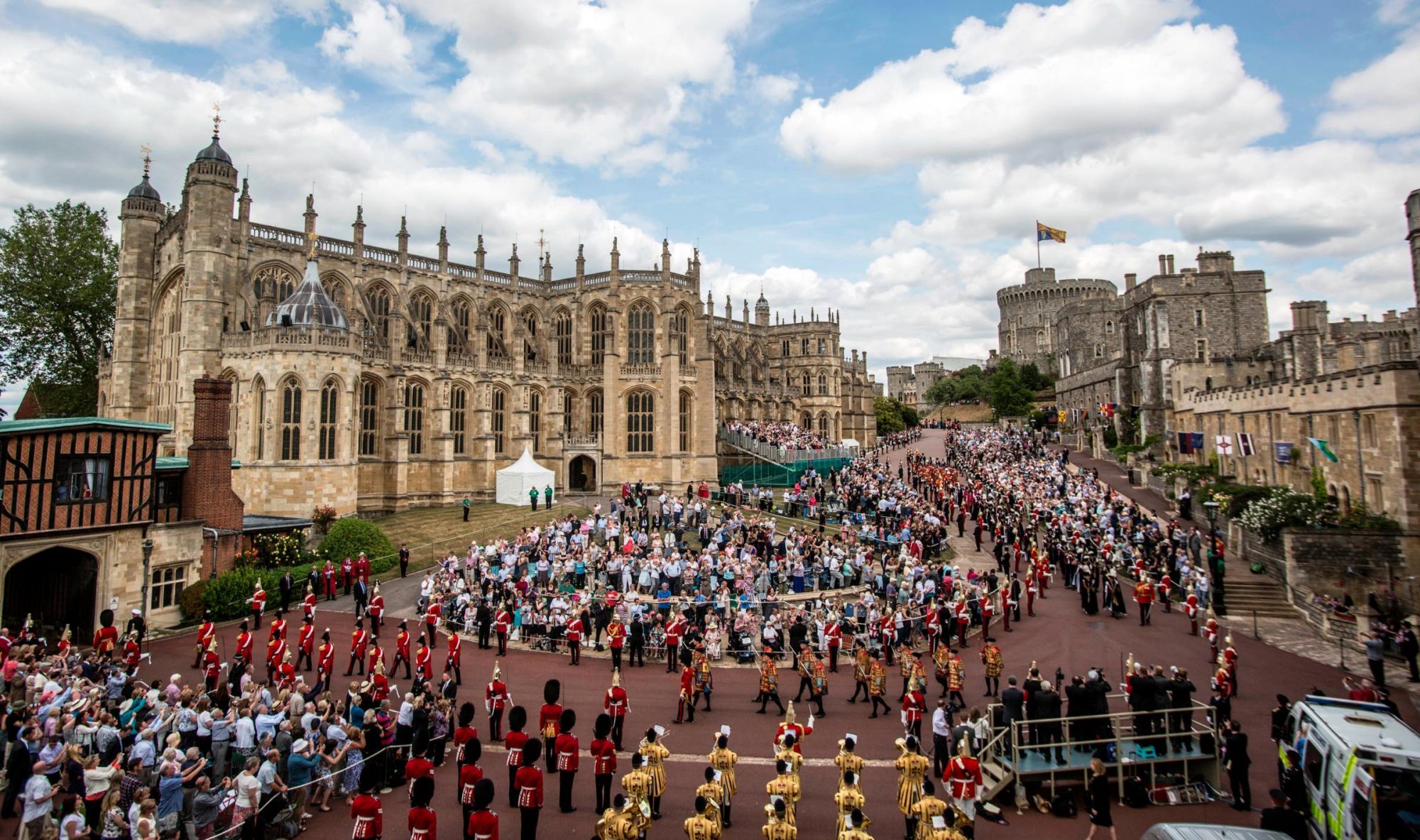Programming note: No royal wedding invitation? Not to worry. You can stream every moment on your mobile phone, laptop, or wherever you get CNN, starting at 5 a.m. ET on Saturday, May 19.
For Meghan Markle, it’s all obviously going to be very different the second time around. For a start, there’s the setting: it should feel rather different under foot.
Her 2011 wedding to producer Trevor Engelson was held on grass and sand at a Jamaican beach resort. This time, when she marries Prince Harry, it’ll be on ancient marble in St George’s Chapel in Windsor, one of England’s finest medieval chapels.
The word “chapel” doesn’t really do it justice. This has been a place of prayer, pageantry and ritual since the 15th century, a favorite for royal christenings (including Prince Harry’s), marriages (especially the Victorians) and, perhaps most all, funerals: 10 British kings are buried in its vaults.
The sense of last resting place brings a certain solemnity. A hush naturally seems to fall over tourists when they enter. They are in a royal church steeped in history, after all.

To visit Windsor Castle, you head directly west out of London. Like many of the one million or so tourists every year, I went by train, half an hour from London Paddington to Slough (the unlovely industrial town memorably derided in 1937 by the poet John Betjeman: “Come friendly bombs and fall on Slough!”) and then a six-minute ride on a single-track branch line to Windsor & Eton Central. A royal fortress has stood on the chalk ridge here above the River Thames for some 900 years. Initially it was made of just earth and timber, but for most of that time, it’s been stone.
On a bright morning, the silhouette of the great castle – battlements and turrets, substantially remodeled in the 19th century – was broodily framed against the sky. At the risk of lese-majesty, it reminded me of a toy castle, part Disney, part Austrian schloss. And the sense of grandeur was further diminished by the distraction of overflying passenger jets. (Windsor is directly on the Heathrow flight path.) But to the far right, as the train approached, you could make out the elegant proportions of St George’s Chapel and its pinnacles of heraldic beasts.
There’s been a royal chapel on this site, dedicated to St George, the patron saint of England, since the 13th century. The present building was started in 1475 by Edward IV, who would later use it as a final resting place, and completed just over 50 years later, during the reign of Henry VIII.

Contrasting with the gray of the castle, the new chapel was built of a warm honey-colored Cotswold stone, floated down the Thames by barge from quarries in Oxfordshire. It’s the kind of stone that looks at its most beautiful bathed in sunshine.
The woman at the airport-style security desk wore her nail varnish patriotically in Union Jack colors. An English family of three – led by a purposeful young dad in head-to-toe Adidas – set me off in the right direction. Mum excitedly told her daughter, “That’s where they’re going to get married!” Nothing more needed to be said.
The chapel is a glorious masterpiece of perpendicular Gothic architecture. Inside, you gaze up to the roof some 75 feet above, a marvel of fan vaulting that runs the length of the chapel. There’s a large reflective mirror in the aisle of the nave (the main body of the chapel) for those who don’t want to strain their necks.
The canopies are bedecked with the heraldic banners, swords, helmets and crests of the Most Noble Order of the Garter – the most prestigious chivalry order in the world, per my Windsor guide book – for whom the chapel is the spiritual home. (Prince William was made a Knight of the Garter in 2008, and Prince Harry is expected to join the Order’s ranks in the near future.)
The Order originated with King Edward III in the 1340s. His magnificent steel broad sword, 6 feet and 8 inches long, still hangs in a chapel side-aisle, as it has for more than 400 years. Edward drew his inspiration from Arthurian legend and the story of the Knights of the Round Table. He created his Knights of the Garter – an elite group of 24, two teams of 12 ready for a joust. The symbolism and tradition continue, if not the sport, with an annual service in the Chapel each June.

The quire area is an extraordinary achievement of medieval craftsmanship. Some 250 men fashioned the elaborate stalls and canopies for the singers, worshipers and knights. The stalls were carved from English oak felled in local woodland, and are now dark with age after centuries of staining and turpentine. The brass plaques pinned to their backs date to 1368. As a tourist, you can sit here and dream of what having a front row seat at the wedding would be like.
And of course, there’s brilliant stained glass everywhere, mostly Victorian. The only medieval stained glass is in the west window, some 75 different panels depicting kings, saints, popes (some defaced), archbishops, bishops and, in the bottom right hand corner, a commoner, assumed to be head mason William Virtue, brandishing a mallet and dressed in yellow shoes.
The George VI Memorial Chapel, an annex completed in 1969, was the first structural addition to the building since 1528. It’s a tiny iron-gated niche, with modern stained-glass windows by the artist John Piper. Poignantly, Queen Elizabeth’s beloved father and mother are both buried here, along with her younger sister, Princess Margaret. (Her headstone was designed by her son, the second Earl of Snowdon.) It’s assumed that the queen and Prince Philip will also be laid to rest here when their time comes. The Duchess of Windsor – or Mrs. Wallis Simpson, as she was formerly known – received a funeral service in the Chapel in 1986, but was buried alongside her husband, Edward VIII, in the royal tomb at Frogmore on the Windsor Estate.

The aisle of St George’s Chapel is long: 255 feet from the west door to the high altar. On May 19, Meghan Markle will sally forth on the blue carpet reserved for royal wedding days, observed by some 600 guests – 500 more than in Jamaica – and a television and internet audience of millions. (Seven seasons of “Suits” never attracted an audience on this scale.)
While you don’t have to be a royal to get married at the chapel, relatively few commoners have married in St George’s Chapel and never an American. Markle will be adding her own little bit of history. Prince Harry and Markle’s service is scheduled to last an hour. She won’t have a sea view this time, but there is a large castle nearby – you can’t miss it. And, reportedly, it’s a rather good place for a wedding reception and a dance. (According to Vogue, Windsor Castle is “the party palace.”)
Sometime around 1 pm, the bride and groom will emerge from the chapel and pose for media photographs on the flight of stone stairs below the west window – or “the West End,” as the guides like to call it. (You could say this will be Meghan Markle’s first starring role in the West End.) But by the time she emerges from the shadows of the chapel, she will have acquired a new title. As is the royal way on wedding days, Harry and Meghan are likely to start married life as a duke and duchess.
